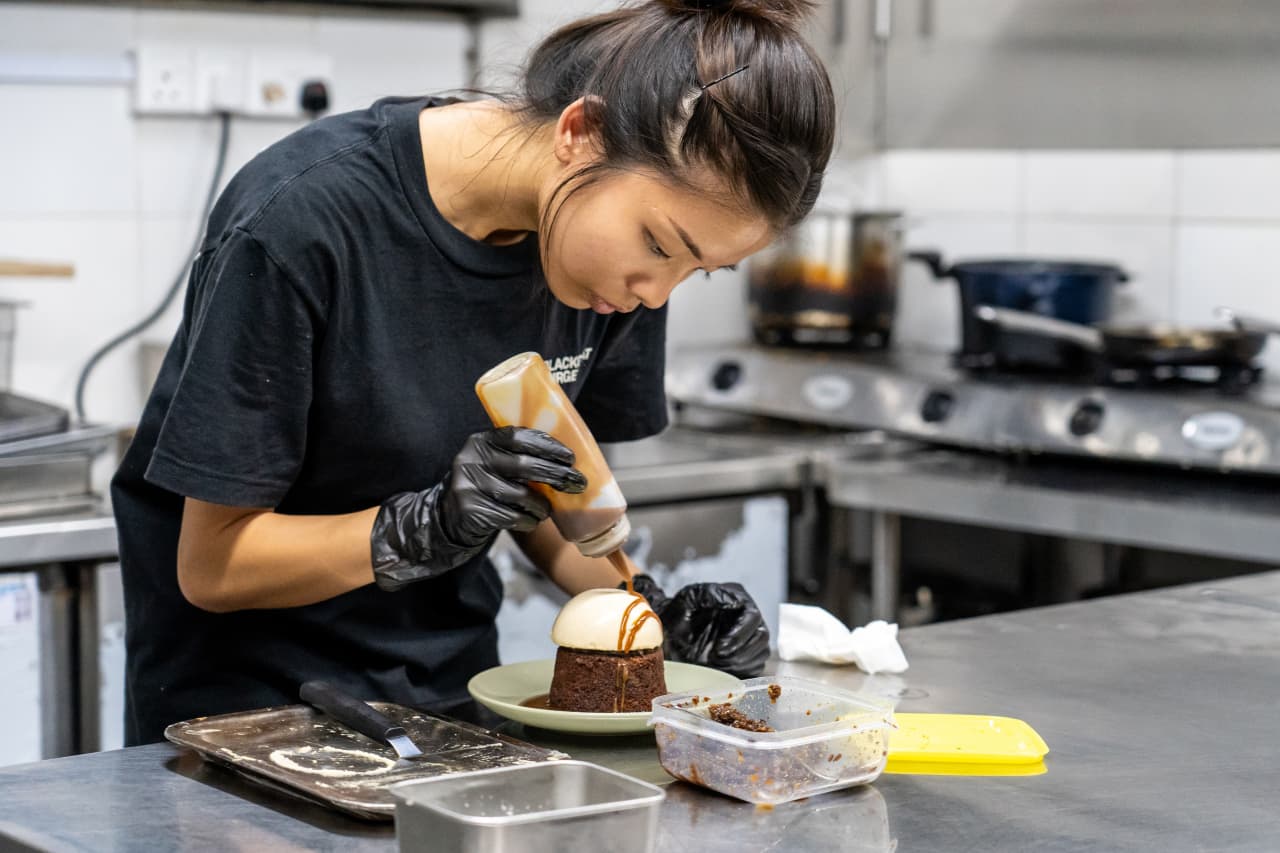Turn Your Devices From Distractions Into Time Savers
Declutter your digital workspace, save time with shortcuts and leverage an AI helper
Every January, I usually purge old snail mail, clothes and unwanted knickknacks to start the year anew. This time, I focused on my digital spaces instead.
My virtual Marie Kondo-ing forced me to think about the indispensable apps and features on my devices—and on the flip side, the time thieves that make it hard to leave the couch. (Looking at you, YouTube.)
What did I learn? The most important thing we can do to improve our digital spaces is kill the wormholes. After culling apps on my devices, deleting Instagram from my iPad made the biggest impact. But there were many more.
I also learned that small tweaks—such as adding helpful shortcuts and setting up your screen only around essential apps—can make a difference. I’ve been spending less time on my devices, and I’m now more efficient at work. Here are some takeaways from the exercise that can help you turn distracting devices into time savers.
Digital decluttering
Cal Newport’s book “Digital Minimalism: Choosing a Focused Life in a Noisy World” inspired me to get rid of the junk on my phone and laptop. Clutter, even in digital form, is stressful, Newport writes. I could relate: I felt overwhelmed every time I turned on my devices.
Digital clutter includes unnecessary files on your computer desktop, promotional emails clogging your inbox and unused apps on your phone. I found that the most satisfying cleanse was clearing my phone’s default home screen—what I see as soon as I unlock the device.
An iPhone app called Blank Spaces (one-week free trial, then $14 annually or a $23 one-time fee) enabled the transformation. I picked my five most-important apps—Kindle, Signal, Messages, Maps and Docs—and let the app do its work. Blank Spaces replaced the usual grid of icons with an empty white background and large tappable text that can launch my chosen apps. I love the new Zen vibes and find myself mindlessly using my phone less often. If needed, I can still get back to my old layout by swiping left.
I spend most of my laptop time in a web browser, which is my most disorganised digital space. I am a terrible tab hoarder, and often have dozens open at once—something that makes my laptop slower.
One Tab, a free browser extension for Chrome, Safari and Firefox, has changed my hoarding habits. With one click, the extension closes all the tabs in an open window and saves the sites as a list of links on a dedicated page. It frees up memory needed for faster computer performance, and makes sure you don’t lose your links.
Timesaving shortcuts
Smartphone widgets are amazing. Instead of the tiny icons with the service’s logo, they’re bigger tiles that show you information like the current weather or what’s next on your calendar without having to open the apps.
My favourites include a multi-city world clock for managing colleagues in different time zones, a quick link to Google Translate’s camera function and a list of my tasks via the to-do app Twos.
On iOS, you can touch and hold any area on the home screen until your app icons jiggle. Tap the + button to look at all apps that have widgets available. You can also add a few to your lock screen to access information without opening your phone. And widgets can now be added to desktops on Macs running the latest software. On Android, touch and hold an empty space on the home screen, then tap Widgets.
You can take this timesaving even further with automations. Shortcuts is a powerful built-in app on iOS and Mac for creating custom workflows. For example, the Start Pomodoro shortcut triggers a 25-minute timer and enables Do Not Disturb for that period. I use the automation for short periods of focus. If you find the Shortcuts interface too intimidating, there’s a gallery with pre-made options.
Android users can set up automated routines with Google Assistant. Tasker ($3.49) is a more advanced—though more complex—Android alternative.
A souped-up clipboard
There are two benefits to having a clipboard manager. It saves everything you copy—that is, command + C on a Mac—so you don’t lose anything to copy-and-paste heaven if you accidentally use the shortcut on something else. It’s also a handy tool for quickly accessing often-repeated text.
The Copy ’Em Mac app costs a $15 one-time fee, and it’s worth every penny. It saves clipboard text and images on your device, and can create keyboard shortcuts for frequently pasted text, such as the short introductory paragraph I email people when reaching out for the first time.
If you’re on Windows, ClipClip is a good alternative. Chromebooks already save the last five copied items. Select the search or “Everything Button” + V to access copy history.
Apple’s Universal Clipboard is fantastic for copying-and-pasting between its devices, such as entering a code from your iPhone’s authentication app on your Mac. Enable Handoff in settings, then make sure the devices are signed in with the same Apple ID and have Bluetooth and Wi-Fi turned on.
Between Android and Windows machines, you can use Nearby Share (soon to be renamed Quick Share) to share text across those devices.
An AI helper
Some workplaces may be banning AI-powered chatbots, such as OpenAI’s ChatGPT and Google’s Bard, but they can shave hours off dreaded personal tasks.
The key to coaxing a high-quality response is starting with a specific, detailed prompt. Try: “Plan a three-course dinner for six people with easy gluten-free and vegetarian recipes. Identify any steps that can be prepared in advance and create a timeline for cooking the recipes. Arrange the ingredients in a list, organised by grocery store aisles.”
I love using chatbots for mixing up my workouts: “Create a five-day exercise plan for someone who is just getting back into shape,” and add any available equipment or necessary modifications.
Just remember, these systems can be wrong, so you may need to double check their work. Still, you’ll have plenty of freed-up time to ask ChatGPT what to binge-watch next.
 Copyright 2020, Dow Jones & Company, Inc. All Rights Reserved Worldwide. LEARN MORE
Copyright 2020, Dow Jones & Company, Inc. All Rights Reserved Worldwide. LEARN MORE
This stylish family home combines a classic palette and finishes with a flexible floorplan
Just 55 minutes from Sydney, make this your creative getaway located in the majestic Hawkesbury region.
No trip to Singapore is complete without a meal (or 12) at its hawker centres, where stalls sell multicultural dishes from generations-old recipes. But rising costs and demographic change are threatening the beloved tradition.
In Singapore, it’s not unusual for total strangers to ask, “Have you eaten yet?” A greeting akin to “Good morning,” it invariably leads to follow-up questions. What did you eat? Where did you eat it? Was it good? Greeters reserve the right to judge your responses and offer advice, solicited or otherwise, on where you should eat next.
Locals will often joke that gastronomic opinions can make (and break) relationships and that eating is a national pastime. And why wouldn’t it be? In a nexus of colliding cultures—a place where Malays, Indians, Chinese and Europeans have brushed shoulders and shared meals for centuries—the mix of flavours coming out of kitchens in this country is enough to make you believe in world peace.
While Michelin stars spangle Singapore’s restaurant scene , to truly understand the city’s relationship with food, you have to venture to the hawker centres. A core aspect of daily life, hawker centres sprang up in numbers during the 1970s, built by authorities looking to sanitise and formalise the city’s street-food scene. Today, 121 government-run hawker centres feature food stalls that specialise in dishes from the country’s various ethnic groups. In one of the world’s most expensive cities, hawker dishes are shockingly cheap: A full meal can cost as little as $3.
Over the course of many visits to Singapore, I’ve fallen in love with these places—and with the scavenger hunts to find meals I’ll never forget: delicate bowls of laksa noodle soup, where brisk lashes of heat interrupt addictive swirls of umami; impossibly flaky roti prata dipped in curry; the beautiful simplicity of an immaculately roasted duck leg. In a futuristic and at times sterile city, hawker centres throw back to the past and offer a rare glimpse of something human in scale. To an outsider like me, sitting at a table amid the din of the lunch-hour rush can feel like glimpsing the city’s soul through all the concrete and glitz.
So I’ve been alarmed in recent years to hear about the supposed demise of hawker centres. Would-be hawkers have to bid for stalls from the government, and rents are climbing . An upwardly mobile generation doesn’t want to take over from their parents. On a recent trip to Singapore, I enlisted my brother, who lives there, and as we ate our way across the city, we searched for signs of life—and hopefully a peek into what the future holds.
At Amoy Street Food Centre, near the central business district, 32-year-old Kai Jin Thng has done the math. To turn a profit at his stall, Jin’s Noodle , he says, he has to churn out at least 150 $4 bowls of kolo mee , a Malaysian dish featuring savoury pork over a bed of springy noodles, in 120 minutes of lunch service. With his sister as sous-chef, he slings the bowls with frenetic focus.
Thng dropped out of school as a teenager to work in his father’s stall selling wonton mee , a staple noodle dish, and is quick to say no when I ask if he wants his daughter to take over the stall one day.
“The tradition is fading and I believe that in the next 10 or 15 years, it’s only going to get worse,” Thng said. “The new generation prefers to put on their tie and their white collar—nobody really wants to get their hands dirty.”
In 2020, the National Environment Agency , which oversees hawker centres, put the median age of hawkers at 60. When I did encounter younger people like Thng in the trade, I found they persevered out of stubbornness, a desire to innovate on a deep-seated tradition—or some combination of both.
Later that afternoon, looking for a momentary reprieve from Singapore’s crushing humidity, we ducked into Market Street Hawker Centre and bought juice made from fresh calamansi, a small citrus fruit.
Jamilah Beevi, 29, was working the shop with her father, who, at 64, has been a hawker since he was 12. “I originally stepped in out of filial duty,” she said. “But I find it to be really fulfilling work…I see it as a generational shop, so I don’t want to let that die.” When I asked her father when he’d retire, he confidently said he’d hang up his apron next year. “He’s been saying that for many years,” Beevi said, laughing.
More than one Singaporean told me that to truly appreciate what’s at stake in the hawker tradition’s threatened collapse, I’d need to leave the neighbourhoods where most tourists spend their time, and venture to the Heartland, the residential communities outside the central business district. There, hawker centres, often combined with markets, are strategically located near dense housing developments, where they cater to the 77% of Singaporeans who live in government-subsidised apartments.
We ate laksa from a stall at Ghim Moh Market and Food Centre, where families enjoyed their Sunday. At Redhill Food Centre, a similar chorus of chattering voices and clattering cutlery filled the space, as diners lined up for prawn noodles and chicken rice. Near our table, a couple hungrily unwrapped a package of durian, a coveted fruit banned from public transportation and some hotels for its strong aroma. It all seemed like business as usual.
Then we went to Blackgoat . Tucked in a corner of the Jalan Batu housing development, Blackgoat doesn’t look like an average hawker operation. An unusually large staff of six swirled around a stall where Fikri Amin Bin Rohaimi, 24, presided over a fiery grill and a seriously ambitious menu. A veteran of the three-Michelin-star Zén , Rohaimi started selling burgers from his apartment kitchen in 2019, before opening a hawker stall last year. We ordered everything on the menu and enjoyed a feast that would astound had it come out of a fully equipped restaurant kitchen; that it was all made in a 130-square-foot space seemed miraculous.
Mussels swam in a mushroom broth, spiked with Thai basil and chives. Huge, tender tiger prawns were grilled to perfection and smothered in toasted garlic and olive oil. Lamb was coated in a whisper of Sichuan peppercorns; Wagyu beef, in a homemade makrut-lime sauce. Then Ethel Yam, Blackgoat’s pastry chef prepared a date pudding with a mushroom semifreddo and a panna cotta drizzled in chamomile syrup. A group of elderly residents from the nearby towers watched, while sipping tiny glasses of Tiger beer.
Since opening his stall, Rohaimi told me, he’s seen his food referred to as “restaurant-level hawker food,” a categorisation he rejects, feeling it discounts what’s possible at a hawker centre. “If you eat hawker food, you know that it can often be much better than anything at a restaurant.”
He wants to open a restaurant eventually—or, leveraging his in-progress biomedical engineering degree, a food lab. But he sees the modern hawker centre not just as a steppingstone, but a place to experiment. “Because you only have to manage so many things, unlike at a restaurant, a hawker stall right now gives us a kind of limitlessness to try new things,” he said.
Using high-grade Australian beef and employing a whole staff, Rohaimi must charge more than typical hawker stalls, though his food, around $12 per 100 grams of steak, still costs far less than high-end restaurant fare. He’s found that people will pay for quality, he says, even if he first has to convince them to try the food.
At Yishun Park Hawker Centre (now temporarily closed for renovations), Nurl Asyraffie, 33, has encountered a similar dynamic since he started Kerabu by Arang , a stall specialising in “modern Malay food.” The day we came, he was selling ayam percik , a grilled chicken leg smothered in a bewitching turmeric-based marinade. As we ate, a hawker from another stall came over to inquire how much we’d paid. When we said around $10 a plate, she looked skeptical: “At least it’s a lot of food.”
Asyraffie, who opened the stall after a spell in private dining and at big-name restaurants in the region, says he’s used to dubious reactions. “I think the way you get people’s trust is you need to deliver,” he said. “Singapore is a melting pot; we’re used to trying new things, and we will pay for food we think is worth it.” He says a lot of the same older “uncles” who gawked at his prices, are now regulars. “New hawkers like me can fill a gap in the market, slightly higher than your chicken rice, but lower than a restaurant.”
But economics is only half the battle for a new generation of hawkers, says Seng Wun Song, a 64-year-old, semiretired economist who delves into the inner workings of Singapore’s food-and-beverage industry as a hobby. He thinks locals and tourists who come to hawker centers to look for “authentic” Singaporean food need to rethink what that amorphous catchall word really means. What people consider “heritage food,” he explains, is a mix of Malay, Chinese, Indian and European dishes that emerged from the country’s founding. “But Singapore is a trading hub where people come and go, and heritage moves and changes. Hawker food isn’t dying; it’s evolving so that it doesn’t die.”
This stylish family home combines a classic palette and finishes with a flexible floorplan
Just 55 minutes from Sydney, make this your creative getaway located in the majestic Hawkesbury region.






















